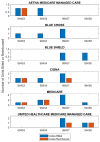A Pilot Study of a Sensor Enhanced Activity Management System for Promoting Home Rehabilitation Exercise Performed during the COVID-19 Pandemic: Therapist Experience, Reimbursement, and Recommendations for Implementation
- PMID: 34639494
- PMCID: PMC8508164
- DOI: 10.3390/ijerph181910186
A Pilot Study of a Sensor Enhanced Activity Management System for Promoting Home Rehabilitation Exercise Performed during the COVID-19 Pandemic: Therapist Experience, Reimbursement, and Recommendations for Implementation
Abstract
Adherence to home exercise programs (HEPs) during physical rehabilitation is usually unmonitored and is thought to be low from self-reports. This article describes exploratory implementation of a Sensor Enhanced Activity Management (SEAM) system that combines HEP management software with a movement sensor for monitoring and motivating HEP adherence. The article also presents results from attempting to gain reimbursement for home use of the system with therapist oversight using Remote Physiologic Monitoring (RPM) codes. Four therapists used the system in their regular practice during the first six months of the COVID-19 pandemic. Therapists filled out surveys, kept notes, and participated in interviews. Billing and reimbursement data were obtained from the treatment facility. Exercise data from the SEAM system were used to understand HEP adherence. Patients were active for a mean of 40% (26% SD) of prescribed days and completed a mean of 25% (25% SD) of prescribed exercises. The therapists billed 23 RPM codes (USD 2353), and payers reimbursed eight of those instances (USD 649.21). The therapists reported that remote monitoring and the use of a physical movement sensor was motivating to their patients and increased adherence. Sustained technical support for therapists will likely improve implementation of new remote monitoring and treatment systems. RPM codes may enable reimbursement for review and program management activities, but, despite COVID-19 CMS waivers, organizations may have more success if these services are billed under supervision of a physician.
Keywords: COVID-19; HEP; RPM; home exercise program; implementation; mRehab; mobile applications; physical rehabilitation; remote physiologic monitoring; telerehabilitation.
Conflict of interest statement
D.J.R. has a financial interest in H.A.G. and Flint Rehabilitation Devices LLC, companies that develop and sell rehabilitation devices. Flint Rehabilitation Devices produces the FitMi sensor used in this study. The terms of these arrangements have been reviewed and approved by the University of California, Irvine, in accordance with its conflict of interest policies. N.K. has a financial interest in Pt Pal. D.K.Z. has a financial interest in Flint Rehabilitation Devices, LLC. All other authors declare that they have no competing interests.
Figures
References
-
- Bassett S. The assessment of patient adherence to physiotherapy rehabilitation. N. Z. J. Physiother. 2003;31:60–66.



